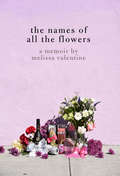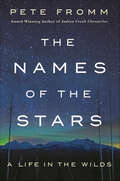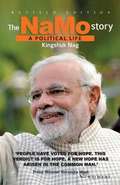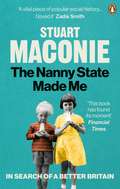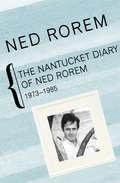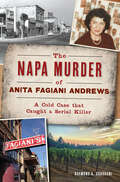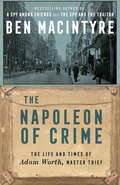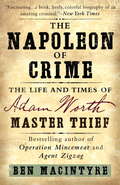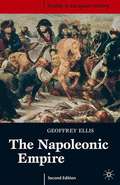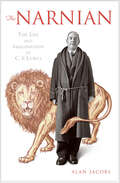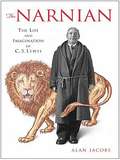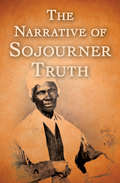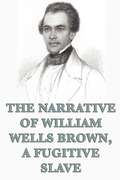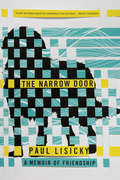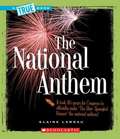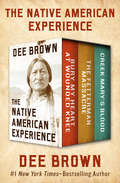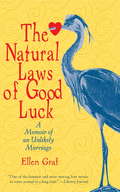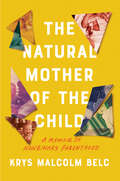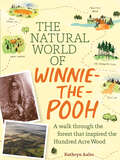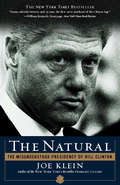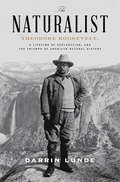- Table View
- List View
The Name of a Queen
by Dennis Moore Charles BeemItinerarium ad Windsor concerns a central question of the Elizabethan era: Why should a woman be allowed to rule with the same powers as a king? The man who poses this controversial question within Itinerarium is none other than Queen Elizabeth's powerful favorite Robert Dudley, Earl of Leicester. On hand to provide answers are the statesman and poet Thomas Sackville, Lord Buckhurst, and William Fleetwood antiquary, Recorder of London, and dutiful chronicler of their 1575 conversation. This critical edition of Itinerarium reproduces Fleetwood's text with annotations and a host of interpretive and contextualizing essays from leading scholars. Taken together, they constitute the definitive introduction to this remarkable discussion of regnant queenship, providing a valuable tool for understanding contemporary notions of and underlying fears concerning the efficacy and desirability of female rule in Elizabethan England.
The Names of All the Flowers: A Memoir
by Melissa ValentineA “poignant, painful, and gorgeous” memoir that explores siblinghood, adolescence, and grief for a family shattered by loss (Alicia Garza, cocreator, Black Lives Matter).Melissa and her older brother Junior grow up running around the disparate neighborhoods of 1990s Oakland, two of six children to a white Quaker father and a black Southern mother. But as Junior approaches adolescence, a bullying incident and later a violent attack in school leave him searching for power and a sense of self in all the wrong places; he develops a hard front and falls into drug dealing. Right before Junior’s twentieth birthday, the family is torn apart when he is murdered as a result of gun violence.The Names of All the Flowers connects one tragic death to a collective grief for all black people who die too young. A lyrical recounting of a life lost, Melissa Valentine’s debut memoir is an intimate portrait of a family fractured by the school-to-prison pipeline and an enduring love letter to an adored older brother. It is a call for justice amid endless cycles of violence, grief, and trauma, declaring: “We are all witness and therefore no one is spared from this loss.”“A portrait of a place, a person who died too young, the systems that led to that death, and the keen insights of the author herself. Lyrical and smart, with appropriate undercurrents of rage.” —Emily Raboteau, author of Searching for Zion“Eloquently poignant.” —Kirkus Reviews
The Names of the Stars: A Life in the Wilds
by Pete Fromm“Finely tuned reflections” from an award-winning author “on [a] small but fully inhabited piece of the backwoods make this an adventure worth savoring” (Kirkus Reviews).At twenty years old, Pete Fromm heard of a job babysitting salmon eggs, seven winter months alone in a tent in the Selway-Bitterroot Wilderness. Leaping at this chance to be a mountain man, with no experience in the wilds, he left the world. Thirteen years later, he published his beloved memoir of that winter, Indian Creek Chronicles.Twenty five years later, he was asked to return to the wilderness to babysit more fish eggs. But no longer a footloose twenty year old, at forty-five, he was the father of two young sons. He left again, alone, straight into the heart of Montana’s Bob Marshall wilderness, walking a daily ten mile loop to his fish eggs through deer and elk and the highest density of grizzly bears in the lower forty-eight states.The Names of the Stars is not only a story of a trek through the wilderness but also an account of how an impulsive kid transformed into a father without losing his love for the wilds. From loon calls echoing across Northwood lakes to the grim realities of life guarding in the Nevada desert, through the isolation of Indian Creek and years spent running the Snake and Rio Grande as a river ranger, Pete seeks out the source of this passion for wildness, as well as explores fatherhood and mortality and all the costs and risks and rewards of life lived on its own terms.“Inspiring.” —Jim Lynch, author of Before the Wind“A coming-of-age book for adults; it is a tightrope walk between holding on to who you are and letting go a little for something you love even more.” —Kenyon Review
The Namo Story: A Political Life
by Kingshuk NagOne of the truly enigmatic personalities on the contemporary Indian political canvas, Narendra Damodardas Modi is difficult to ignore. <P><P>From his humble beginnings as a RSS pracharak to his rise in the Hindutva ranks, and from being Bharatiya Janata Party's master planner to one of the its most popular and controversial state chief ministers, Modi's mantra of change and development is gradually finding many takers. Though he evokes vastly different reactions among the citizens for his alleged role during the Godhra aftermath, what is absolutely clear is that he indeed is racing towards the centre stage, making the 2014 General Elections look more like a Presidential system - where, you either vote for him or against him. And that, as they say, is the Modi effect. Kingshuk Nag paints the most vivid portrait of the extraordinary politician who is poised to take on a new role in the coming years.
The Nanny State Made Me: A Story of Britain and How to Save it
by Stuart Maconie'He is as funny as Bryson and as wise as Orwell' ObserverIt was the spirit of our finest hour, the backbone of our post-war greatness, and it promoted some of the boldest and most brilliant schemes this isle has ever produced: it was the Welfare State, and it made you and I. But now it's under threat, and we need to save it.In this timely and provocative book, Stuart Maconie tells Britain’s Welfare State story through his own history of growing up as a northern working class boy. What was so bad about properly funded hospitals, decent working conditions and affordable houses? And what was so wrong about student grants, free eye tests and council houses? And where did it all go so wrong? Stuart looks toward Britain’s future, making an emotional case for believing in more than profit and loss; and championing a just, fairer society.
The Nantucket Diary of Ned Rorem, 1973–1985: 1973-1985
by Ned RoremThe acclaimed author of The Paris Diary, Pulitzer Prize–winning American composer Ned Rorem offers readers a mellow, thoughtful, and candid chronicle of his life, work, and contemporariesOne of our most revered contemporary musical artists—winner of the Pulitzer Prize and declared &“the world&’s best composer of art songs&” by Time magazine—Ned Rorem writes that he is &“a composer who writes, not a writer who composes.&” Despite this claim, Rorem&’s published diaries, memoirs, essay collections, and other nonfiction works have all received resounding acclaim for their lyricism, bold honesty, and insightful social commentary. His Nantucket Diary, covering the years 1973 through 1985, reveals a more mature and graceful Ned Rorem, a man who has experienced great loss and serious illness yet has lost none of his acute observational skills and keenly opinionated nature. His wit remains bracing and his candor refreshing as he offers sharp critiques on the state of modern classical music and its creators. His accounts of times shared with luminaries and legends, musical and otherwise (including Leonard Bernstein, Edward Albee, Virgil Thomson, and Stephen Sondheim) are consistently enthralling and delightful. The outspoken hedonist of The Paris Diary may be older and more subdued now, but his incisive observations and unique outlook on life, both personal and creative, remain an unforgettable reading experience.
The Napa Murder of Anita Fagiani: A Cold Case that Caught a Serial Killer (True Crime)
by Raymond A GuadaganiIn 1974, the brutal murder of Anita Fagiani Andrews, a fifty-one-year-old former beauty queen and mother of two, shook the small working-class town of Napa. Detectives, criminalists and forensic experts raced to identify who'd struck Anita down in her own bar, but despite their efforts, the case went cold. Decades passed, during which the town grew into a world-renowned wine region and tourist destination, but the case remained an open question. After thirty-seven years, thanks to DNA evidence, the killer--imprisoned for a different murder--was finally found and brought to justice. Join author and retired judge Raymond A. Guadagni as he tells the story of the shocking murder, the investigation and the subsequent trial over which he presided in 2011.
The Napoleon of Crime: The Life and Times of Adam Worth, Master Thief
by Ben MacintyreA New York Times Notable BookFrom the bestselling, acclaimed author of A Spy Among Friends, The Spy and the Traitor, and Rogue Heroes, the vastly entertaining saga of Adam Worth, the most notorious bank thief of Victorian society and the inspiration for Sir Arthur Conan Doyle's Professor Moriarty.The Victorian era's most infamous and iconic thief, Adam Worth, was known as the Napoleon of Crime. Suave, cunning, and fearless, Worth learned early that the best way to succeed was to steal--and steal he did. Following a strict code of honor, Worth won the respect of Victorian society. He also aroused its fear by becoming a chilling phantom, mingling undetected with the upper classes, whose valuables he brazenly stole. His most celebrated heist: Gainsborough's grand portrait of the Duchess of Devonshire--ancestor of Diana, Princess of Wales--a painting Worth adored and often slept beside for twenty years. With a brilliant and colorful gang, Worth secretly ran operations from New York to London, Paris, and South Africa--until betrayal and a Pinkerton man finally brought him down.Here is a grand, dazzling tour into the gaslit underworld of the nineteenth century, and into the doomed genius of a criminal mastermind.
The Napoleon of Crime: The Life and Times of Adam Worth, Master Thief
by Ben MacintyreFrom the New York Times bestselling author of Prisoners in the Castle, a dramatic portrait of the master thief of the nineteenth century: Adam Worth &“Fascinating . . . a brisk, lively, colorful biography of an amazing criminal.&”—The New York Times (Best Books of the Year) The Victorian era&’s most infamous and iconic thief, the inspiration for Sherlock Holmes&’s Professor Moriarty, Adam Worth was known as the Napoleon of crime. Suave, cunning, and fearless, Worth learned early that the best way to succeed was to steal. And steal he did. Following a strict code of honor, Worth won the respect of Victorian society. He also aroused its fear by becoming a chilling phantom, mingling undetected with the upper classes, whose valuables he brazenly stole. His most celebrated heist: Gainsborough&’s grand portrait of the Duchess of Devonshire—ancestor of Diana, Princess of Wales—a painting Worth adored and often slept with for twenty years. With a brilliant gang that included &“Piano&” Charley, a jewel thief, train robber, and playboy, and &“the Scratch&” Becker, master forger, Worth secretly ran operations from New York to London, Paris, and South Africa—until betrayal and a Pinkerton man finally brought him down. The Napoleon of Crime is a grand, dazzling tour into the gaslit underworld of the nineteenth century, and into the doomed genius of a criminal mastermind.
The Napoleonic Empire
by Geoffrey EllisWas Napoleon the 'heir' of the French Revolution, the great consolidator of its reforms, or did he distort and even abandon its principles? What were the aims and effects of Napoleonic rule in France and in conquered Europe more widely? This second edition of The Napoleonic Empire offers a critical reassessment of these central issues and provides a fresh synthesis of the most important research during the past forty years. Beginning with Napoleon's inheritance, Geoffrey Ellis balances the conflicting evidence for change or continuity over the years from the Revolutionary upheaval to the height of the 'Grand Empire'. The new edition: - covers the administrative, military, social and economic aspects of the subject - redefines the whole impact of Napoleonic imperialism in both the short and longer term - offers more extensive coverage of Napoleon's treatment of the annexed lands and subject states of his Empire, as well as of military conscription, desertion, and the role of the Gendarmerie in the war against brigands and military defaulters - provides an expanded discussion of the institutional legacy of Napoleonic rule in France and Europe With an up-dated and more comprehensive bibliography, this thoroughly revised text is an invaluable guide to Napoleon's Europe and is ideal for specialist and general readers alike.
The Narnian: The Life and Imagination of C. S. Lewis
by Alan JacobsThe White Witch, Aslan, fauns and talking beasts, centaurs and epic battles between good and evil -- all these have become a part of our collective imagination through the classic volumes of The Chronicles of Narnia. Over the past half century, children everywhere have escaped into this world and delighted in its wonders and enchantments. Yet what we do know of the man who created Narnia? This biography sheds new light on the making of the original Narnian, C. S. Lewis himself.Lewis was one of the intellectual giants of the twentieth century and arguably the most influential religious writer of his day. An Oxford don and scholar of medieval literature, he loved to debate philosophy at his local pub, and his wartime broadcasts on the basics of Christian belief made him a celebrity in his native Britain. Yet one of the most intriguing aspects of Clive Staples Lewis remains a mystery. How did this middle-aged Irish bachelor turn to the writing of stories for children -- stories that would become among the most popular and beloved ever written?Alan Jacobs masterfully tells the story of the original Narnian. From Lewis's childhood days in Ireland playing with his brother, Warnie, to his horrific experiences in the trenches during World War I, to his friendship with J. R. R. Tolkien (and other members of the "Inklings"), and his remarkable late-life marriage to Joy Davidman, Jacobs traces the events and people that shaped Lewis's philosophy, theology, and fiction. The result is much more than a conventional biography of Lewis: Jacobs tells the story of a profound and extraordinary imagination. For those who grew up with Narnia, or for those just discovering it, The Narnian tells a remarkable tale of a man who knew great loss and great delight, but who knew above all that the world holds far more richness and meaning than the average eye can see.
The Narnian: The Life and Imagination of C. S. Lewis
by Alan JacobsonBiography of Lewis and an analysis of his writings.
The Narrative of Sojourner Truth
by Sojourner TruthTruth spoke about abolition, women's rights, prison reform, and preached to the Legislature against capital punishment. Not everyone welcomed her preaching and lectures, but she had many friends and staunch support among many influential people at the time, including Amy Post, Parker Pillsbury, Frances Gage, Wendell Phillips, William Lloyd Garrison, Laura Smith Haviland, Lucretia Mott, and Susan B. Anthony. Truth started dictating her memoirs to her friend Olive Gilbert, and in 1850 William Lloyd Garrison privately published her book, The Narrative of Sojourner Truth: A Northern Slave.
The Narrative of Sojourner Truth: A Northern Slave, Emancipated From Bodily Servitude By The State Of New York, In 1828: With A Portrait
by Sojourner TruthFrom slavery to liberation to life as an abolitionist, feminist, orator, and preacher—the autobiography of a woman who refused to be anything but free. Born into slavery in New York around 1797, then sold from master to master, Sojourner Truth spent her formative years witnessing the cruelty inherent in the institution of slavery. Escaping to a friendly household before emancipation, she learned that her young son had been sold illegally and launched a lawsuit that would end with his release—the first time in America that a black woman went to court against a white man and won. But Truth hadn&’t even begun her work. She made it her life&’s mission to free all those who were considered less than equal—both those in chains and those held down because of their gender—ultimately inspiring her friends and followers with the legendary speech that came to be known as &“Ain&’t I a Woman?&” So great was Truth&’s renown and respect that she met with President Abraham Lincoln in 1864. She was later named one of the 100 Most Significant Americans of All Time by Smithsonian magazine. Published in 1850, The Narrative of Sojourner Truth was spoken aloud to Truth&’s friend and neighbor Olive Gilbert, as she herself was illiterate. Along with The Narrative of the Life of Frederick Douglass, it remains one of the most moving and eloquent slave narratives—a testament to the resilience of the human spirit. This ebook has been professionally proofread to ensure accuracy and readability on all devices.
The Narrative of William Wells Brown, A Fugitive Slave
by William Wells BrownThirteen years ago, I came to your door, a weary fugitive from chains and stripes. I was a stranger, and you took me in. I was hungry, and you fed me. Naked was I, and you clothed me. Even a name by which to be known among men, slavery had denied me. You bestowed upon me your own. Base indeed should I be, if I ever forget what I owe to you, or do anything to disgrace that honored name!
The Narrative of the Life of Frederick Douglass
by Frederick DouglassThis fiery autobiography, written as anti-slavery propaganda, tells of Douglass' struggle to gain freedom and became a 19th century national bestseller. [This text is listed as an example that meets Common Core Standards in English language arts in grades 6-8 at http://www.corestandards.org.]
The Narrow Door: A Memoir of Friendship
by Paul LisickyIn The Narrow Door, Paul Lisicky creates a compelling collage of scenes and images drawn from two long-term relationships, one with a woman novelist and the other with his ex-husband, a poet. The contours of these relationships shift constantly. Denise and Paul, stretched by the demands of their writing lives, drift apart, and Paul's romance begins to falter. And the world around them is frail: environmental catastrophes like the Deepwater Horizon oil spill, natural disasters like the earthquake in Haiti, and local disturbances make an unsettling backdrop to the pressing concerns of Denise's cancer diagnosis and Paul's impending breakup. Lisicky's compassionate heart and resilience seem all the stronger in the face of such searing losses. His survival--hard-won, unsentimental, authentic--proves that in turning toward loss, we embrace life.
The National Anthem
by Elaine LandauIdeal for today's young investigative reader, each A True Book includes lively sidebars, a glossary and index, plus a comprehensive "To Find Out More" section listing books, organizations, and Internet sites. A staple of library collections since the 1950s, the new A True Book series is the definitive nonfiction series for elementary school readers. A True Book -- American History: How do you wrap a 450,000-pound gift? What is the world's oldest and shortest written consitution? Find out in this patriotic celebration of things uniquely American.
The Native American Experience: Bury My Heart at Wounded Knee, The Fetterman Massacre, and Creek Mary's Blood
by Dee BrownThree powerful tales from the acclaimed chronicler of the American West—including the #1 New York Times bestseller, Bury My Heart at Wounded Knee. Two profoundly moving, candid histories and a powerful novel illuminate important aspects of the Native American story. Bury My Heart at Wounded Knee: The #1 New York Times bestseller that awakened the world to the destruction of American Indians in the nineteenth-century West, Dee Brown&’s groundbreaking history focuses on the betrayals, battles, and systematic slaughter suffered by Native American tribes between 1860 and 1890, culminating in the Sioux massacre at Wounded Knee. &“Shattering, appalling, compelling . . . One wonders, reading this searing, heartbreaking book, who, indeed, were the savages&” (The Washington Post). The Fetterman Massacre: A riveting account of events leading up to the Battle of the Hundred Slain—the devastating 1866 conflict at Wyoming&’s Ft. Phil Kearney that pitted Lakota, Arapaho, and Northern Cheyenne warriors—including Oglala chief Red Cloud, against the United States cavalry under the command of Captain William Fetterman. Based on a wealth of historical resources and sparked by Brown&’s narrative genius, this is an essential look at one of the frontier&’s defining conflicts. Creek Mary&’s Blood: This New York Times bestseller fictionalizes the true story of Mary Musgrove—born in 1700 to a Creek tribal chief—and five generations of her family. The sweeping narrative spans the Revolutionary War, the Trail of Tears, and the Civil War—in which Mary&’s descendants fought on both sides of the conflict. Rich in detail and human drama, Creek Mary&’s Blood offers &“a robust, unfussed crash-course in Native American history that rolls from East to West with dark, inexorable energy&” (Kirkus Reviews).
The Natural Laws of Good Luck: A Memoir of an Unlikely Marriage
by Ellen GrafEllen is forty-six, divorced, and having no luck with personal ads when her Chinese girlfriend comes up with a plan: she has a brother in China, Zhong-hua, who's lonely too. Maybe they'd like each other? Taking a leap of faith that most of us wouldn't dare, Ellen travels to China to meet him. Though they speak only a few words of each other's language, there's an unspoken connection between them and they decide to marry.What follows is a remarkably touching and humorous story of two people from completely different worlds trying to make a marriage work. Settling in at Ellen's ramshackle farmhouse in upstate New York, they quickly discover the cultural chasm that lies between them. Ellen and her teenage daughter decide to adopt a policy of nonjudgment as Zhong-hua lobbies to sell their refrigerator ("Just three people, no need"), serves them giant sea slugs for dinner, and brusquely nudges Ellen aside without an "excuse me" ("Family no need these kind of words").Zhong-hua is not the type to offer his wife impromptu smiles or hugs, but in bed at night he holds her tightly like she's "something long lost and precious that might not live until morning." The Natural Laws of Good Luck is an unusual and exquisitely written love story--one that will resonate with anyone who has ever contemplated with wonder the spaces that exist between us and those we care about.
The Natural Mother of the Child: A Memoir of Nonbinary Parenthood
by Krys Malcolm BelcKrys Malcolm Belc's visual memoir-in-essays explores how the experience of gestational parenthood—conceiving, birthing, and breastfeeding his son Samson—eventually clarified his gender identity. Krys Malcolm Belc has thought a lot about the interplay between parenthood and gender. As a nonbinary, transmasculine parent, giving birth to his son Samson clarified his gender identity. And yet, when his partner, Anna, adopted Samson, the legal documents listed Belc as “the natural mother of the child.” By considering how the experiences contained under the umbrella of “motherhood” don’t fully align with Belc’s own experience, The Natural Mother of the Child journeys both toward and through common perceptions of what it means to have a body and how that body can influence the perception of a family. With this visual memoir in essays, Belc has created a new kind of life record, one that engages directly with the documentation often thought to constitute a record of one’s life—childhood photos, birth certificates—and addresses his deep ambivalence about the “before” and “after” so prevalent in trans stories, which feels apart from his own experience. The Natural Mother of the Child is the story of a person moving past societal expectations to take control of his own narrative, with prose that delights in the intimate dailiness of family life and explores how much we can ever really know when we enter into parenting.
The Natural Philosophy of Margaret Cavendish: Reason and Fancy during the Scientific Revolution (The Johns Hopkins University Studies in Historical and Political Science #128)
by Lisa T. SarasohnHonorable Mention, Typographic Covers, Large Nonprofit Publishers, 2010 Washington Book Publishers ShowMargaret Cavendish, Duchess of Newcastle, led a remarkable—and controversial—life, writing poetry and prose and philosophizing on the natural world at a time when women were denied any means of a formal education. Lisa T. Sarasohn acutely examines the brilliant work of this untrained mind and explores the unorthodox development of her natural philosophy. Cavendish wrote copiously on such wide-ranging topics as gender, power, manners, scientific method, and animal rationality. The first woman to publish her own natural philosophy, Cavendish was not afraid to challenge the new science and even ridiculed the mission of the Royal Society. Her philosophy reflected popular culture and engaged with the most radical philosophies of her age. To understand Cavendish’s scientific thought, Sarasohn explains, is to understand the reception of new knowledge through both insider and outsider perspectives in early modern England. In close readings of Cavendish’s writings—poetry, treatises, stories, plays, romances, and letters—Sarasohn explores the fantastic and gendered elements of her natural philosophy. Cavendish saw knowledge as a continuum between reason and fancy, and her work integrated imaginative speculation and physical science. Because she was denied the university education available to her male counterparts, she embraced an epistemology that favored contemplation and intuition over logic and empiricism. The Natural Philosophy of Margaret Cavendish serves as a guide to the unusual and complex philosophy of one of the seventeenth century’s most intriguing minds. It not only celebrates Cavendish as a true figure of the scientific age but also contributes to a broader understanding of the contested nature of the scientific revolution.
The Natural World of Winnie-the-Pooh: A Walk Through the Forest that Inspired the Hundred Acre Wood
by Kathryn AaltoLoved “Goodbye Christopher Robin”? Learn more about the real place that inspired the beloved stories. Delve into the home of the world’s most beloved bear! The Natural World of Winnie-the-Pooh explores the magical landscapes where Pooh, Christopher Robin, and their friends live and play. The Hundred Acre Wood—the setting for Winnie-the-Pooh’s adventures—was inspired by Ashdown Forest, a wildlife haven that spans more than 6,000 acres in southeast England. In the pages of this enchanting book you can visit the ancient black walnut tree on the edge of the forest that became Pooh’s house, go deep into the pine trees to find Poohsticks Bridge, and climb up to the top of the enchanted Galleons Lap, where Pooh says goodbye to Christopher Robin. You will discover how Milne's childhood connection with nature and his role as a father influenced his famous stories, and how his close collaboration with illustrator E. H. Shepard brought those stories to life. This charming book also serves as a guide to the plants, animals, and places of the remarkable Ashdown Forest, whether you are visiting in person or from the comfort of your favorite armchair. In a delightful narrative, enriched with Shepard’s original illustrations, hundreds of color photographs, and Milne’s own words, you will rediscover your favorite characters and the magical place they called home.
The Natural: The Misunderstood Presidency of Bill Clinton
by Joe KleinNovelist and political analyst Klein argues that for all the scandal and political disappointments, Clinton's two terms in office quietly made good times a little better and left no huge mess for the next tenant to clean up. Annotation c. Book News, Inc. , Portland, OR (booknews. com)
The Naturalist: Theodore Roosevelt, A Lifetime of Exploration, and the Triumph of American Natural History
by Darrin LundeA captivating new account of how Theodore Roosevelt’s lifelong passion for the natural world set the stage for America’s wildlife conservation movement and determined his legacy as a founding father of today’s museum naturalism No U.S. president is more popularly associated with nature and wildlife than is Theodore Roosevelt—prodigious hunter, tireless adventurer, and ardent conservationist. We think of him as a larger-than-life original, yet in The Naturalist, Darrin Lunde has firmly situated Roosevelt’s indomitable curiosity about the natural world in the tradition of museum naturalism. As a child, Roosevelt actively modeled himself on the men (including John James Audubon and Spencer F. Baird) who pioneered this key branch of biology by developing a taxonomy of the natural world—basing their work on the experiential study of nature. The impact that these scientists and their trailblazing methods had on Roosevelt shaped not only his audacious personality but his entire career, informing his work as a statesman and ultimately affecting generations of Americans’ relationship to this country’s wilderness. Drawing on Roosevelt’s diaries and travel journals as well as Lunde’s own role as a leading figure in museum naturalism today, The Naturalist reads Roosevelt through the lens of his love for nature. From his teenage collections of birds and small mammals to his time at Harvard and political rise, Roosevelt’s fascination with wildlife and exploration culminated in his triumphant expedition to Africa, a trip which he himself considered to be the apex of his varied life. With narrative verve, Lunde brings his singular experience to bear on our twenty-sixth president’s life and constructs a perceptively researched and insightful history that tracks Roosevelt’s maturation from exuberant boyhood hunter to vital champion of serious scientific inquiry.From the Hardcover edition.

